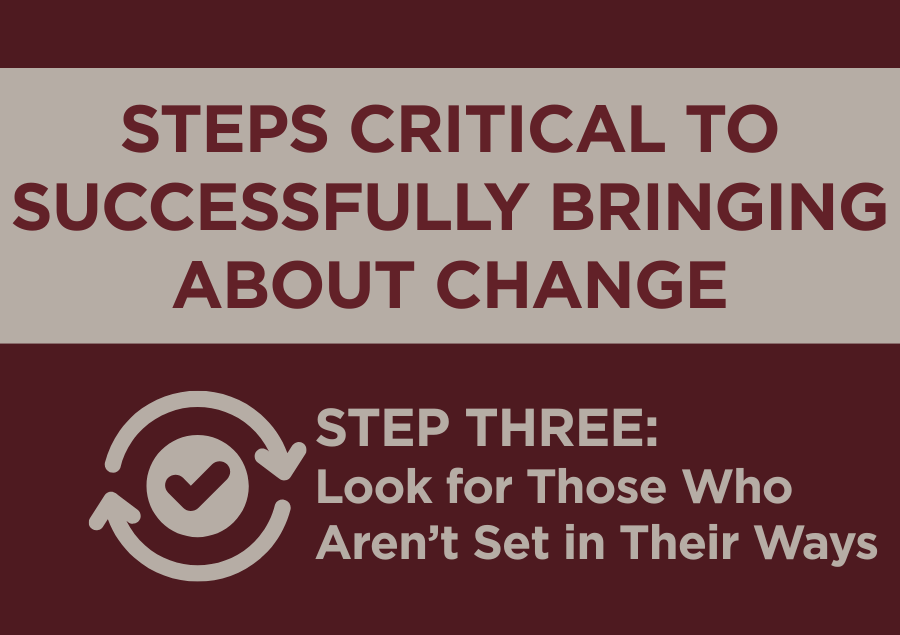
Tim O’Neill, Executive Director
Look for Those Who Aren’t Set in Their Ways
Have you ever tried to introduce change to people who have become set in their ways and don’t see the need for change? That’s one of the hardest and most demoralising challenges that a leader can face. Not only can it cause immense frustration, but it will drain a leader of energy like few other things can.
I was recently talking to a leader who was faced with just such a circumstance. The leader knew that if their church (or churches in this case) were to have any hope of becoming missionally effective, change was necessary. The leader saw that there were communities to be engaged, people to be reached and discipled and new ministries and churches to be pioneered. But some other key individuals didn’t see the need for change. Or if they did, they didn’t want to change. They were stuck in their ways.
When I’m confronted with this, I often think of what Jesus said about the old and new wineskins.
And no one pours new wine into old wineskins. If he does, the new wine will burst the skins and will be spilled, and the skins will be destroyed. Instead new wine must be poured into new wineskins. No one after drinking old wine wants the new, for he says, ʻThe old is good enough.ʼ” (Luke 5:37-39 NET)
Old wineskins have lost their flexibility. The new wine will be dynamic and expansive whilst the old wineskin will be brittle.
Some who are used to the old will try the new, knowing deep down that the old needs to change. But when they are confronted the new, it’s just too different and they will go back to what they know saying the “the old is good enough”.
So where can you look for and hopefully find men and women who haven’t yet become set in their ways? In the article ‘Look for Those Who are Open to the New’ we explored how change can be brought about using Barbell Strategy and separating innovators and early adopters from the rest of the church to provide the opportunity for them to explore new paradigms and practices.
There are two more groups that can be identified and worked with using the Barbell Strategy. They are:
- the young, and
- the young in the faith.
The Young
Up to around the age of 25, the young have brains that may be described as being fungible or spongy. What this means is that they are open to new paradigms and practices as they have not yet become set in their ways.
Commonly after age 25 or thereabouts, brains are less fungible / spongy as thinking has solidified. So if a person grows up in a church, by their mid 20’s they have in mind that “this is what church looks like, and this is what we do”.
Recognising this, there is the opportunity to start the process of missional innovation like disciple making and training planters much sooner (ie school age) than normal when the young are forming their thinking and paradigms rather than when methods and practices are already in their mind.
The Young In the Faith
A similar story can be told about the young in the faith. I didn’t come to faith until I was 26 and so didn’t have in mind programming that told me “this is what church is and how church is done”.
As the young in the faith are introduced to scripture (in particular to the teachings of Jesus and the amazing story that unfolds through the book of Acts), they can potentially be set aside to innovate new paradigms and practices as can the young.
Perhaps the worst thing that can be done with either of these two groups is to lump them in with everyone else so that they learn from observation and experience what church is and how it is practiced (as it has been in the past).
When this happens they will likely either learn to fit in or leave. Another option is that they be encouraged and given the freedom to experiment and innovate.
The young and the young in the faith are generally not yet stuck in their ways. Let’s provide them with the opportunity to remain unstuck!
Tim O’Neill
Executive Director, Exponential Australia
